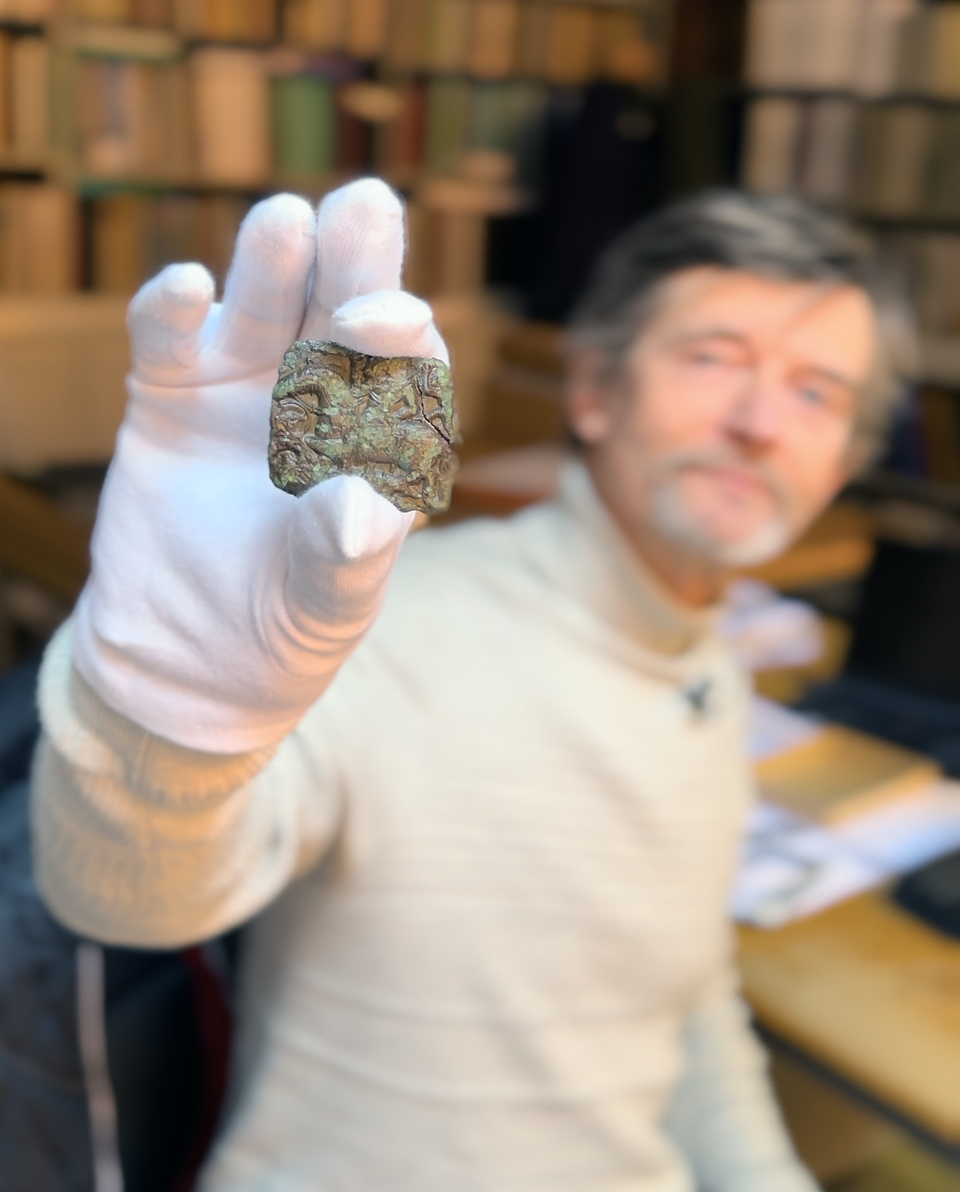An ancient stamp unearthed by a metal detectorist suggests the Sutton Hoo was actually made in Denmark, and not Sweden as previously thought.
The Anglo-Saxon helmet, dated to the 7th century, is one of the UK’s most iconic archaeological finds and often called the “British Tutankhamen”.
Previous studies suggested it came from Uppland in Sweden, where helmets decorated with motifs of mounted warriors have been found.
However, a new stamp unearthed at the Danish island of Tåsinge has been found to bear a “striking resemblance” to one of the motifs on the iconic helmet, the National Museum of Denmark said in a statement.
“The Sutton Hoo helmet is iconic worldwide. It is a national treasure for the British on a par with the chariot of the sun for Danes,” said Peter Pentz, curator at the National Museum of Denmark.
“It would be sensational if this helmet, obviously worn by someone of great importance, possibly a king, was made in Tåsinge,” he said.
The new find challenges the current understanding of the helmet’s origins and the power balance in Northern Europe at the time it was made, around 600 CE.
It also suggests that Denmark likely played a more central role in Europe’s ancient history than previously thought.

The helmet was first uncovered during an archaeological excavation in Suffolk in 1939. It was found buried as part of an elaborate ship burial dated to the 7th century.
At first, the remains of the helmet were uncovered in pieces, but archaeologists put the fragments together to find the motif of a mounted warrior with a man lying under the horse.
Now, this same motif has been traced to Denmark’s Tåsinge island in the Southern Funen archipelago.
A metal detectorist found a special ancient stamp known as a “patrice” on the island bearing the same motif.
Comparing the motif on the stamp with that on the Sutton Hoo helmet, researchers found that the Tåsinge patrice is much closer to the one on the helmet than previously analysed Swedish motifs.
Some similarities between the two include a cuff at the motif warrior’s wrist, the warrior’s hair as well as an almond-shaped harness fitting on the horse’s head, they say.
On the contrary, a wild boar or bird of prey on the Swedish motif is not seen on the Sutton Hoo helmet or the new find from Tåsinge.
The newly discovered stamp and the helmet may have not only come from the same region, but likely have also been made by the same artists, scientists suspect.
“Despite being made in very different places, many motifs are clearly inspired by each other. But when the likeness is as strong as it is here, it could mean that they were not only made in the same place but even by the same craftsmen,” the museum curator said.
“Denmark could have been relatively united and powerful as early as 600 AD. It is a find that challenges previous theories, and that is always exciting,” he added.
Trump officials are analyzing how much it will cost to take control of Greenland
UK to work with allies and social media to tackle people smuggling adverts
Judge holds ICE agent in contempt after he detained suspect during a trial
England enjoys sunniest March on record thanks to long dry spell
Stone found by three-year-old turns out to be 3,800-year-old amulet
Discovery of ancient garden beneath Jesus’ burial site backs up Biblical account







